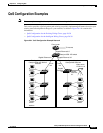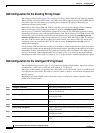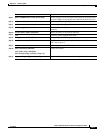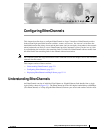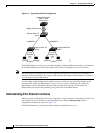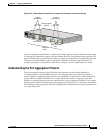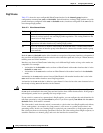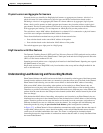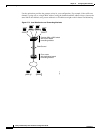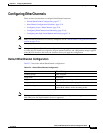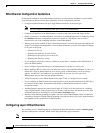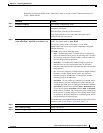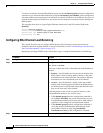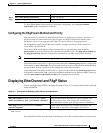
27-5
Catalyst 2950 Desktop Switch Software Configuration Guide
78-14982-01
Chapter 27 Configuring EtherChannels
Understanding EtherChannels
Physical Learners and Aggregate-Port Learners
Network devices are classified as PAgP physical learners or aggregate-port learners. A device is a
physical learner if it learns addresses by physical ports and directs transmissions based on that
knowledge. A device is an aggregate-port learner if it learns addresses by aggregate (logical) ports.
When a device and its partner are both aggregate-port learners, they learn the address on the logical
port-channel. The device sends packets to the source by using any of the interfaces in the EtherChannel.
With aggregate-port learning, it is not important on which physical port the packet arrives.
The switch uses source-MAC address distribution for a channel if it is connected to a physical learner
even if the user configures destination-MAC address distribution.
These frame distribution mechanisms are possible for frame transmission:
• Port selection based on the source-MAC address of the packet
• Port selection based on the destination- MAC address of the packet
The switch supports up to eight ports in a PAgP group.
PAgP Interaction with Other Features
The Dynamic Trunking Protocol (DTP) and Cisco Discovery Protocol (CDP) send and receive packets
over the physical interfaces in the EtherChannel. Trunk ports send and receive PAgP protocol data units
(PDUs) on the lowest numbered VLAN.
Spanning tree sends packets over a single physical interface in the EtherChannel. Spanning tree regards
the EtherChannel as one port.
PAgP sends and receives PAgP PDUs only from interfaces that are up and have PAgP enabled for the
auto or desirable mode.
Understanding Load Balancing and Forwarding Methods
EtherChannel balances the traffic load across the links in a channel by reducing part of the binary pattern
formed from the addresses in the frame to a numerical value that selects one of the links in the channel.
EtherChannel load balancing can use either source-MAC or destination-MAC address forwarding.
With source-MAC address forwarding, when packets are forwarded to an EtherChannel, they are
distributed across the ports in the channel based on the source-MAC address of the incoming packet.
Therefore, to provide load balancing, packets from different hosts use different ports in the channel, but
packets from the same host use the same port in the channel (and the MAC address learned by the switch
does not change).
With destination-MAC address forwarding, when packets are forwarded to an EtherChannel, they are
distributed across the ports in the channel based on the destination host’s MAC address of the incoming
packet. Therefore, packets to the same destination are forwarded over the same port, and packets to a
different destination are sent on a different port in the channel. You configure the load balancing and
forwarding method by using the port-channel load-balance global configuration command.
In Figure 27-3, an EtherChannel of four workstations communicates with a router. Because the router is
a single-MAC-address device, source-based forwarding on the switch EtherChannel ensures that the
switch uses all available bandwidth to the router. The router is configured for destination-based
forwarding because the large number of workstations ensures that the traffic is evenly distributed from
the router EtherChannel.



